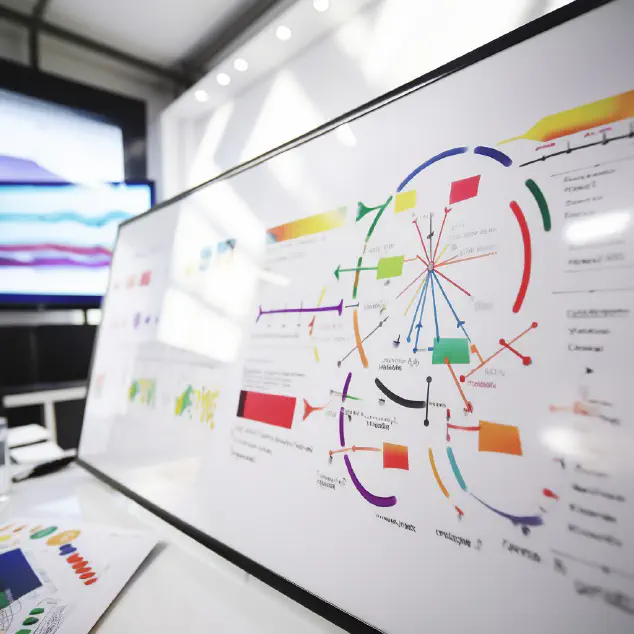Introduction
Situational analysis is a crucial process that involves gathering, analyzing, and interpreting data to gain insights into a particular situation or problem. It provides a foundation for decision making by providing a clear understanding of the current state of affairs. Accurate and well-interpreted data is essential in this process as it forms the basis for informed decisions.
Data is often referred to as the new oil, highlighting its significance in today’s data-driven world. However, conducting a comprehensive situational analysis can be challenging due to various reasons. In this article, we will explore some common challenges that organizations and individuals face in situational analysis and discuss strategies to overcome them.
In the following sections, we will address challenges such as insufficient data, inaccurate data, complex data interpretation, bias and subjectivity, and lack of integration. We will shed light on the potential consequences of these challenges and provide practical solutions to mitigate their impact.
By understanding these challenges and implementing the suggested strategies, individuals and organizations can enhance the accuracy and interpretation of their data, ultimately leading to better decision making. So, let’s dive deeper into each challenge and explore the ways to overcome them effectively.
Common Challenges in Situational Analysis
1. Insufficient Data
Situational analysis relies heavily on data to provide accurate insights and inform decision-making. One of the most common challenges faced in this process is dealing with insufficient data. This refers to situations where there is a lack of available information for a comprehensive analysis.
Insufficient data can have significant consequences on the accuracy and reliability of the analysis. It may lead to incomplete or biased understanding of the situation, which can result in flawed decision-making. Without sufficient data, organizations and individuals may not have a clear picture of the current state of affairs, making it difficult to identify trends, patterns, and potential risks or opportunities.
To overcome the challenge of insufficient data, various strategies can be employed. First and foremost, organizations should invest in effective data collection strategies. This may involve implementing surveys, interviews, or other data collection methods to gather relevant information. Additionally, leveraging external sources such as market research reports, government data, or industry databases can help fill in the gaps and provide a broader context for the analysis.
2. Inaccurate Data
Another common challenge in situational analysis is dealing with inaccurate data. Inaccurate data refers to information that is incorrect, unreliable, or outdated. This can be a result of various factors such as human error, data entry mistakes, or data collection methods that lack rigor.
Inaccurate data can have severe implications on decision-making processes. It can lead to incorrect assumptions, flawed analysis, and ultimately, poor decision-making. Therefore, it is crucial to implement measures to ensure data accuracy.
One way to minimize data inaccuracies is through regular auditing and validation processes. This involves systematically verifying the accuracy of the data by cross-checking with multiple sources, conducting data quality checks, and eliminating any inconsistencies or errors. Implementing robust data management systems that enforce data integrity and provide clear guidelines for data entry and validation can also help improve the accuracy of the data.
3. Complex Data Interpretation
Complex data sets can pose significant challenges in situational analysis. These complexities could arise from large volumes of data, data from diverse sources, or data that requires specialized expertise to interpret. Understanding and interpreting complex data sets correctly is crucial for accurate analysis and decision-making.
Misinterpretation or miscommunication of complex data can lead to flawed analysis and misguided decisions. It is therefore essential to develop the necessary skills and techniques to handle complex data effectively.
One way to improve data interpretation skills is through data visualization. Visualizing data through charts, graphs, or infographics can help simplify complex information and make it more digestible. Additionally, employing statistical analysis techniques can provide useful insights and patterns hidden within the data. Seeking guidance from subject matter experts or data analysts can also be valuable in understanding and interpreting complex data sets accurately.
4. Bias and Subjectivity
Bias and subjectivity can significantly impact situational analysis. Bias refers to the preconceived notions or preferences that individuals or organizations may have, which can influence the interpretation and analysis of data. Subjectivity refers to the personal opinions, emotions, or perspectives that can influence decision-making.
Both bias and subjectivity can potentially lead to biased analysis and decision-making. They can result in an incomplete or skewed understanding of the situation, which can have adverse effects on the quality of decisions made.
To mitigate bias and subjectivity, it is essential to involve diverse perspectives in the analysis process. This may involve forming interdisciplinary teams or seeking input from individuals with varying backgrounds and experiences. Peer reviews can also be helpful in minimizing bias by providing independent assessments of the analysis and ensuring objectivity. Additionally, utilizing objective criteria and standardizing evaluation processes can further reduce subjectivity and improve the accuracy of the analysis.
5. Lack of Integration
The lack of integration of data from various sources and formats is another common challenge in situational analysis. In today’s interconnected world, organizations gather data from multiple sources such as internal databases, external datasets, social media, or customer feedback. However, integrating these disparate sources of data can be challenging.
Data integration is crucial for comprehensive situational analysis as it provides a holistic view of the situation. It allows for a better understanding of the relationships, dependencies, and patterns that exist within the data.
To address the challenge of lack of integration, organizations can invest in data integration tools and technologies. These tools can help automate the process of data integration and ensure data consistency across different sources. Additionally, establishing standardized data protocols and formats can facilitate easier integration and analysis of data.
In conclusion, situational analysis comes with its fair share of challenges. However, by addressing the common challenges of insufficient data, inaccurate data, complex data interpretation, bias and subjectivity, and lack of integration, organizations and individuals can overcome these obstacles and make informed decisions based on accurate and well-interpreted data. Implementing the suggested strategies and techniques will help ensure the reliability and comprehensiveness of the situational analysis, ultimately leading to better decision-making processes.
Conclusion
In conclusion, overcoming common challenges in situational analysis is vital for accurate and well-informed decision making. Insufficient data can result in incomplete analysis and lead to poor decision outcomes. To address this challenge, organizations should focus on data collection strategies and consider leveraging external sources to supplement their data.
Similarly, inaccurate data poses a significant risk to situational analysis. Implementing robust data validation and quality control measures, such as regular auditing and using data management systems, can greatly minimize the accuracy issues in data.
Complex data interpretation is another challenge that can hinder effective situational analysis. Misinterpretation and miscommunication of complex data sets can lead to faulty conclusions and strategies. To improve data interpretation skills, organizations should focus on using data visualization techniques, conducting statistical analysis, and seeking expert guidance when needed.
Bias and subjectivity can also impact situational analysis. It is important to acknowledge and address the potential biases that can arise during analysis. Involving diverse perspectives, conducting peer reviews, and utilizing objective criteria can help reduce bias and support more objective decision making.
Lastly, the lack of integration of data from various sources and formats can be a major challenge in situational analysis. Investing in data integration tools and establishing standardized data protocols can assist in overcoming this challenge. By doing so, organizations can ensure that all relevant data is considered and analyzed in a comprehensive manner.
To sum up, by actively addressing these common challenges in situational analysis, organizations can enhance the quality and accuracy of their decision making processes. By collecting sufficient and accurate data, improving data interpretation skills, reducing bias, and integrating data effectively, organizations can make more informed decisions that lead to improved outcomes. It is crucial for organizations to implement the strategies suggested in this article to maximize the benefits of situational analysis and drive success in their operations.

